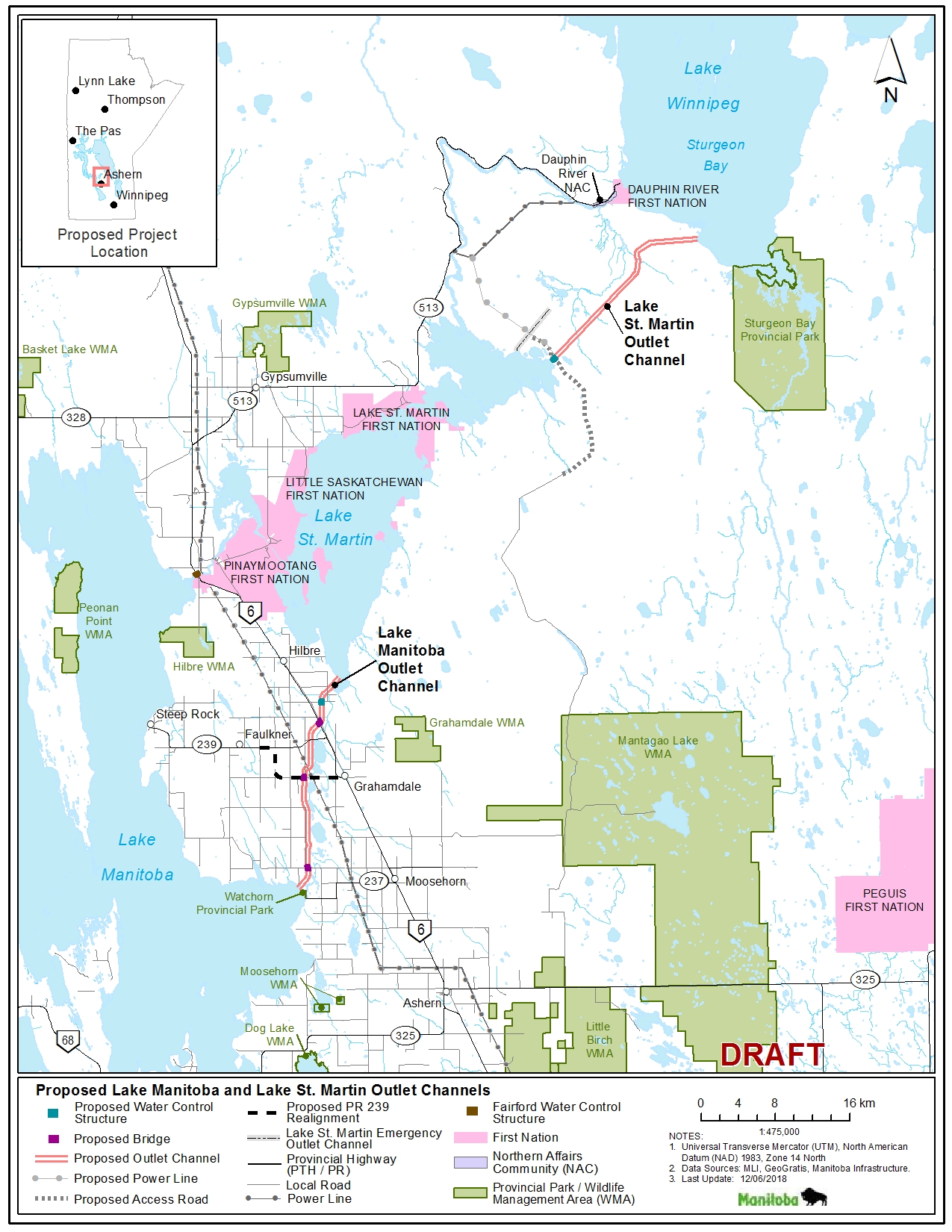
Funding for flood control outlets on Lake Manitoba and Lake St. Martin announced
June 19, 2018
By
CCE
The project consists of building two approximately 23km-long diversion channels as well as building two bridges and water control structures, a 24-kilovolt distribution line, and adjusting surrounding highway infrastructure.
 The governments of Canada and Manitoba will cost share up to $540 million in new flood management infrastructure for the Lake Manitoba and Lake St. Martin outlet channels.
The governments of Canada and Manitoba will cost share up to $540 million in new flood management infrastructure for the Lake Manitoba and Lake St. Martin outlet channels.
Federal funding of $247.5 million will be provided for the Lake Manitoba and Lake St. Martin Outlet Channels Project, the first project to be funded under the recently launched Disaster Mitigation and Adaptation Fund. Manitoba will provide matching funds in the amount of $247.5 million, plus an additional $45 million in order to complete the project.
The governments of Canada and Manitoba identified the channels project as a major priority, due to severe flooding in the area in 2011 and 2014. These disasters resulted in extensive damage to homes, businesses and infrastructure in the province, as well as emergency evacuations, particularly for communities around Lake St. Martin.
During times of flooding and high-water levels on Lake Manitoba, the new outlet channel will carry water directly from Lake Manitoba to Lake St. Martin. The Fairford River is the natural outlet to Lake St. Martin. The Lake St. Martin channel will move water directly to Lake Winnipeg. The Dauphin River is the natural outlet to Lake Winnipeg from Lake St. Martin.
The project consists of building two approximately 23km-long diversion channels: the Lake Manitoba Outlet Channel will run north from Watchorn Bay on Lake Manitoba to Birch Bay on Lake St. Martin; the Lake St. Martin Outlet Channel will run northeast from Lake St. Martin to Lake Winnipeg south of Willow Point. The project also involves building two bridges and water control structures, a 24-kilovolt distribution line, and adjusting surrounding highway infrastructure.
The project will significantly reduce the flood damage experienced by First Nations located along Lake St. Martin, complementing other regional flood protection infrastructure to ensure a more comprehensive provincial water control network that enables the province to effectively manage flows from the Assiniboine River and Lake Manitoba watersheds spanning Manitoba, southeast Saskatchewan and northeast North Dakota.
Together, the channels will allow Manitoba to regulate lake levels and provide flood protection to individuals, businesses, communities and farmland around Lake Manitoba and Lake St. Martin. Once completed, this work will significantly enhance the region’s ability to regulated water levels on both lakes and protect local Indigenous and non-Indigenous communities from flooding.
The new Lake Manitoba outlet channel is designed with a capacity of 7,500 cubic feet per second (cfs) and the Lake St. Martin channel will carry approximately 11,500 cfs at capacity.
The current capacity of the Lake St. Martin Emergency Outlet Channel is approximately 4,000 cfs. The existing single Lake St .Martin emergency channel to Lake Winnipeg will be available on an emergency basis during construction. After the permanent channels are completed, the existing emergency channel will be modified for environmental support purposes, which are still being defined and developed.
KGS Group was the prime consulting engineer working for the Ministry of Infrastructure and Transportation on the studies and recommendations for flood mitigation in the province.
The current proposed channel alignments are a result of evaluating several options for each channel. Construction of an access road to the Lake St. Martin construction area is underway. The remainder of construction could start as soon as fall 2019.